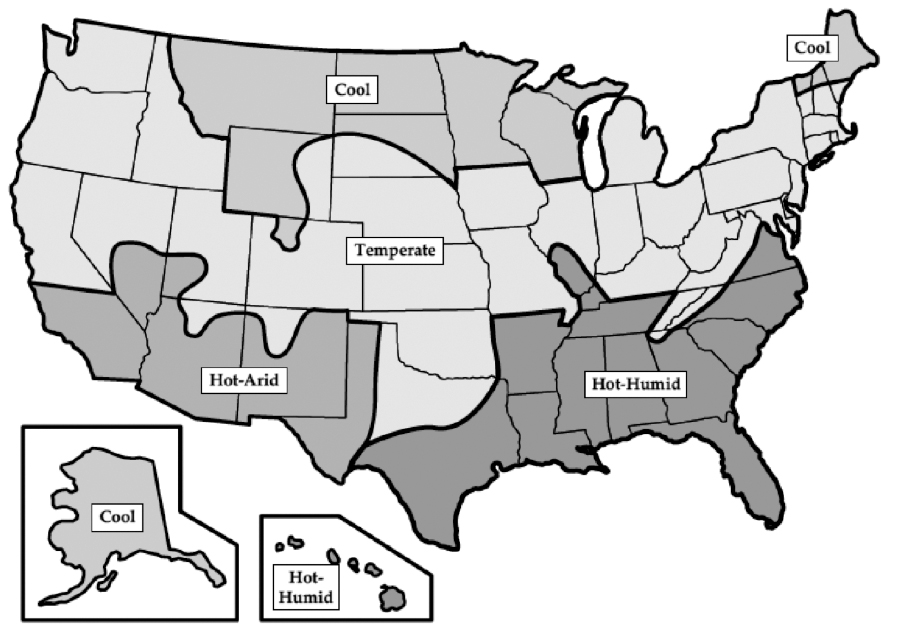
As summer approaches, are you planning any yard work? Landscaping does more than help your home’s curb appeal. It can also impact your home’s carbon footprint. When we think about home energy-efficiency upgrades, it might be easy to forget what you can do outside your home if you have a yard, garden, or terrace. A well-planned landscape allows us to use nature itself to reduce the need for home heating and cooling, increasing comfort with lower energy use all year round. Plus, it can reduce use of water, pesticides, and fuel for landscape and lawn maintenance—all of which benefits the environment! A bonus: the greenery adds beauty to your home.
How can landscaping help reduce energy use (and help with energy costs)?
Trees and plants are a natural counterbalance to heat in the summer and wind chill in the winter. In summertime, have you noticed that it’s always cooler in tree-filled parks and woods? Trees not only provide shade, they lower surrounding temperatures through evapotranspiration—the process by which a plant moves and releases water vapor. Air temperatures under a tree canopy can be up to cooler by 25° F compared to nearby streets. And tree shade over windows and roofs can be an effective way to reduce the need for home air conditioning.
In winter, vegetation and fencing around your home can act as windbreaks to keep out cold drafts. Homes with landscaped windbreaks can lower fuel consumption anywhere from 25% to 40%, depending on how many sides of the home are protected.
Landscaping is a worthwhile investment, whether for a new or existing home. Thoughtfully planted trees can result in 25% lower energy consumption for both home heating and cooling, saving you anywhere from $100-250 a year. The U.S. Department of Energy estimates that your investment will start to pay for itself in less than 8 years. Even a single 6 to 8 foot deciduous tree will start shading your windows in the first year, and grow to shade your roof in 5-10 years.
Landscaping for a cleaner environment
With more trees come more benefits for communities and the environment. Neighborhoods with trees can feel up to 6 degrees cooler than areas with no trees. Widespread tree planting and landscaping can help control erosion, protect water sources, and provide food and habitat for wildlife. It can reduce air pollution by absorbing carbon dioxide and releasing oxygen.
Instead of grassy lawns that require regular watering and mowing, consider planting alternative water-conserving grasses or vegetation that are drought resistant and able to survive on rainfall. Just think of the time you could save on maintenance, not to mention the water and fuel you could save for the environment!
Planning your landscape design by climate (and microclimate)
According to the Department of Energy, the climate region you live in affects how you could plan your landscaping to save energy.
US Climate Regions

Source: National Renewable Energy Laboratory, a U.S. Department of Energy national laboratory.
| Climate region | Landscaping strategy to conserve energy |
|---|---|
| Temperate | Provide shade in the summer, but expose the home to warming sunlight while deflecting winds in the winter |
| Hot-arid | Maximize shade to cool roofs, walls, and windows. Cool the air around the home with plants through evapotranspiration, while allowing summer winds to naturally cool the home |
| Hot-humid | Direct summer breezes towards the home, while trees provide shade in summer but allow sunlight in for warmth in the winter. Avoid placing planting beds that require frequent watering near the home, so as to reduce wetness and humidity |
| Cool | Plant dense windbreaks to protect home from winter winds. Make sure sunlight can reach south-facing windows for warming effects. Shade south and west windows and walls from direct summer sun if overheating is an issue |
However, the specific site of your home also has a microclimate. It may get more rain, sun, wind, or shade than surrounding areas. For example, your home may be in a windy microclimate near the ocean within a hot-humid region, or a warm microclimate on a sunny southern slope in a cool region. Therefore both your climate region and microclimate affect which plants and trees will thrive, as well as what your specific landscaping strategy should be.
Planting for shade
On the south side of your home, especially near windows, plant deciduous trees with high, spreading crowns to provide maximum shading of the sun’s rays while allowing breezes through. On the west side, plant trees with crowns lower to the ground to shade from lower afternoon sun angles. For patio areas, plant bushes, shrubs or climbing vines with a trellis. Shade the ground and pavement around the home with trees, shrubs, and groundcover plants to reduce heat radiation and to cool the air before it reaches your home’s walls and windows.
Planting for windbreak
On the north and northwest sides of your home, plant evergreen trees and shrubs together (possibly combined with fencing) to create windbreaks that lift the wind over your home. For maximum protection, plant the windbreak at a distance that is 2 to 5 times the mature height of the trees. Plant low shrubs on the windward wide of your windbreak to trap snowdrifts and keep them away from your home.
Start with a plan
Before you begin, identify your goals and get familiar with your yard’s features as well as how you want them to improve. Then, draw a landscape plan and decide which areas need shade or windbreak. Decide where you want views to be preserved or screened for privacy or noise protection.
Share your ideas with a local nursery or landscaping contractor for help choosing trees, shrubs, or ground cover. For more information, check out the National Renewable Energy Laboratory’s detailed guide to landscaping.
Happy planting!









